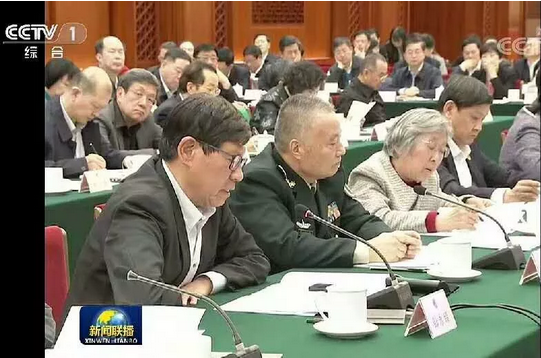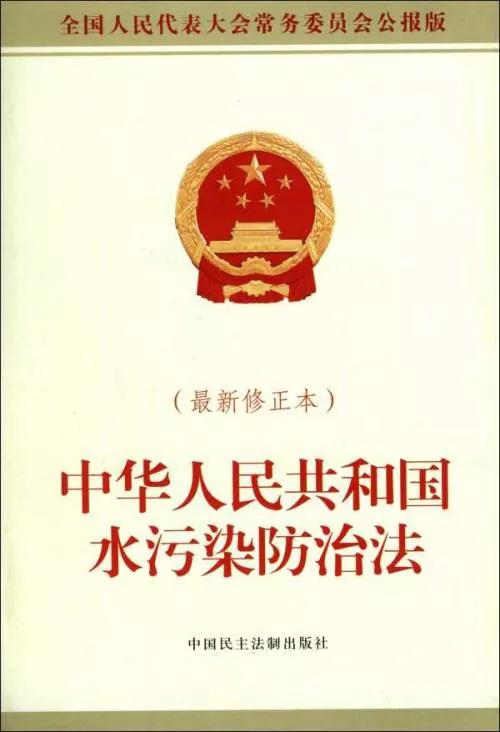 联系我们 : 400-822-5278
联系我们 : 400-822-5278
FAGGIOLATI in China
![]()
4008225278
hotline@faggiolatipump.com
http://www.faggiolatipump.com
On the afternoon of March 25, the Standing Committee of the National People's Congress held an expert evaluation Seminar on the implementation of the Water Pollution Prevention Law. Li Zhanshu, Chairman of the Standing Committee of the Political Bureau of the CPC Central Committee and the Standing Committee of the National People's Congress, attended the meeting to listen to the progress of the project on the evaluation of the implementation of the Water Pollution Prevention and Control Law, as well as the expert opinions, suggestions and speeches. On the 26th, CCTV News Network reported on this
In accordance with the law enforcement and inspection arrangements of the Standing Committee of the National People's Congress, at the beginning of this year, the National People's Congress commissioned the Chinese Academy of Engineering to carry out the evaluation and research work on the implementation of the water pollution prevention and control law, and for the first time introduced the third-party evaluation into the law enforcement and inspection of the Standing Committee of the National People's Congress. At the symposium, Academician Peng Yongzhen of Beijing University of Technology made a speech on the evaluation of the implementation of the water pollution prevention and control law from a professional perspective.

In his speech, Academician Peng Yongzhen said that in the implementation of the Water Pollution Prevention Law, various discharge standards and norms of sewage treatment are important criteria and basis for law enforcement. In recent years, water environmental pollution has been significantly improved. However, the problems of sewage discharge standards are also exposed in this process.
."Standard" is a universal world language. In the international standards of various industries, European and American countries have always occupied a monopoly position. According to statistics, 93% of the standards formulated by them are dominated by other countries, and only 7% of them are made up by China, which shows that the international standards are still relatively backward. There is a saying that "those who get the standard get the world". Standard is an important weight to participate in international competition, but it also keeps pace with the times. Therefore, China should first improve and improve its own standards, promote the development of science, technology and economy, and occupy a place in the future international standard formulation, and gradually improve the voice of international standards.

I. Main Problems and Suggestions on Discharge Standards of Urban Sewage Treatment
1. The discharge standard of urban sewage treatment is too uniform. It should be planned and revised according to local conditions.
China has a vast territory. The environment, climate and living habits vary greatly from east to west, from north to south. The quality, quantity and environmental capacity of sewage are different. Taking nitrogen and phosphorus removal from sewage as an example, the concentration of total nitrogen in urban sewage varies greatly between North and south. There are big problems in implementing the first A discharge standard according to the requirement of "uniformity". In other countries, according to different water environmental capacity and treatment scale, each city and even every sewage treatment plant has different discharge standards.
2. For fragile water bodies such as lakes and bays, stricter local standards for nitrogen and phosphorus emissions should be formulated.
Nitrogen and phosphorus in sewage are also known as nutrients. Their main hazards are eutrophication of slow-flowing water such as lakes and bays, and abnormal reproduction of algae. Therefore, sewage treatment plants discharged into such waters should implement stricter discharge standards. For example, the critical conditions for eutrophication in lakes are only TN > 0.2 mg/L and TP > 0.02 mg/L. At present, China's first A emission standard stipulates that TN does not exceed 15 mg/L and TP does not exceed 0.5 mg/L, which are tens of times the above critical values. It can be seen that even if the standard discharge reaches level A, it will still cause serious harm to such water bodies and it is difficult to contain the spread of eutrophication. Therefore, more stringent local discharge standards should be established for such fragile waters.
3. Appropriate and loose discharge standards of nitrogen and phosphorus should be formulated for non-eutrophic water bodies.
For the rivers, rivers and oceans that will not be eutrophicated, the discharge of nitrogen and phosphorus will not cause harm to the water body. For example, the inland waters in northeastern China originated from Nenjiang River, joined Songhua River, then joined Heilongjiang Province of the Sino-Russian border river, and finally entered the high seas without bays through the Russian territory (Okhotsk Sea). Eutrophication would not occur. Moreover, because of the low temperature in Northeast China, biological nitrogen and phosphorus removal is very difficult. Therefore, for the vast areas without the risk of eutrophication, appropriate relaxation of the emission limits of nitrogen and phosphorus will not only not endanger the water environment, but also greatly save the construction and operation costs of sewage treatment plants. For example, the three major sewage treatment plants in Sydney, Australia, are directly discharged into the sea after primary treatment. )
II. In recent years, more and more regions blindly put forward that urban sewage treatment should meet the excessive requirements of IV and III water quality in Surface Water Environmental Quality Standards, and this trend should be curbed in time.
In fact, IV water is mainly suitable for general industrial water use, III water is mainly suitable for drinking water sources, and they are not the discharge standards of sewage. In the past few years, some first-tier cities are eager to achieve water environmental pollution control. They blindly put forward that urban sewage treatment should meet the IV or even III standards of Surface Water Environmental Quality Standards. As far as CODCr is concerned, the first-class A emission standard limit is 50mg/L, while the IV and III water quality require CODCr limits of 30mg/L and 20mg/L, respectively. Achieving such a high discharge standard will increase the treatment cost more than five times. More importantly, the removal of these small amount of refractory organic matter is mostly non-toxic, such as lignin, cellulose, and does not increase the biochemical oxygen demand - BOD organic matter. Generally speaking, the influent of municipal sewage treatment plants does not contain toxic organic pollutants, and it is not necessary to meet such strict standards. As mentioned above, some areas do not even need to meet the first A discharge standard. In fact, in the United States, Japan and Australia and other countries, CODCr has not been used as the emission index of urban sewage treatment at all, only BOD emission standard.
The requirements of nitrogen and phosphorus for surface water quality IV and III are even higher. In fact, no sewage treatment plant in Beijing and Shanghai can meet the above standards, and far from meeting them. In recent years, with the advice and appeal of experts, some first-tier cities have gradually returned to rationality, but many second-tier, third-tier and fourth-tier cities have blindly followed up. Therefore, we should strongly appeal to curb the trend of blindly raising excessive wastewater treatment discharge standards and competing with each other as soon as possible.
At present, some industrial wastewater treatment is too strict CODCr discharge standards, there are also many problems, more need to be demonstrated and improved in the future.
If we say that in the international arena, "those who get the standard will win the world" and "those who lose the standard will lose the world", then there is the suspicion that "wrong standards will confuse the world" at home. Therefore, in the future, we should pay more attention to the evaluation, argumentation and continuous improvement of sewage discharge standards, so as to provide more accurate scale and reliable basis for the implementation of the Water Pollution Prevention and Control Law, and control the pollution of water environment fundamentally.